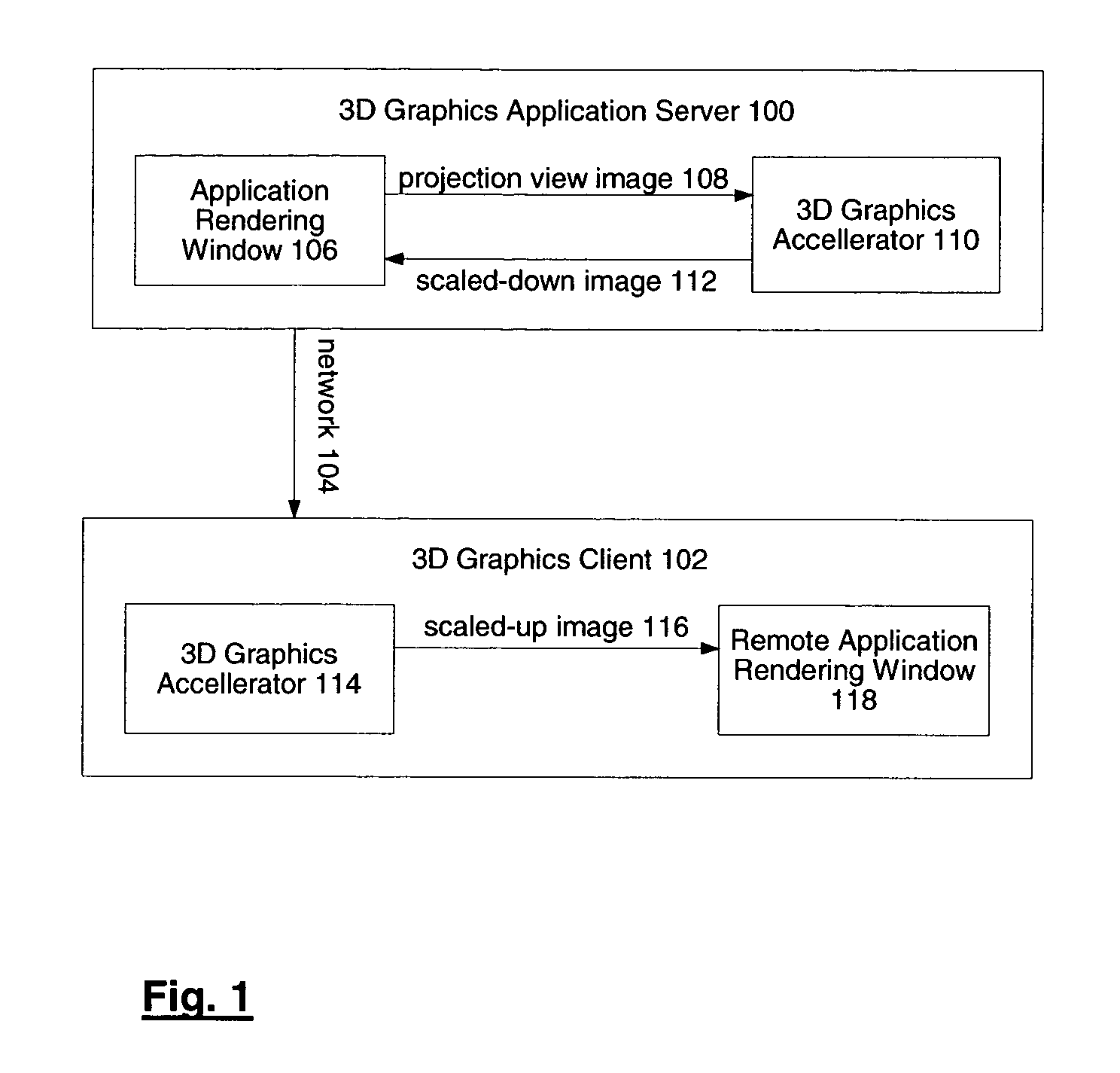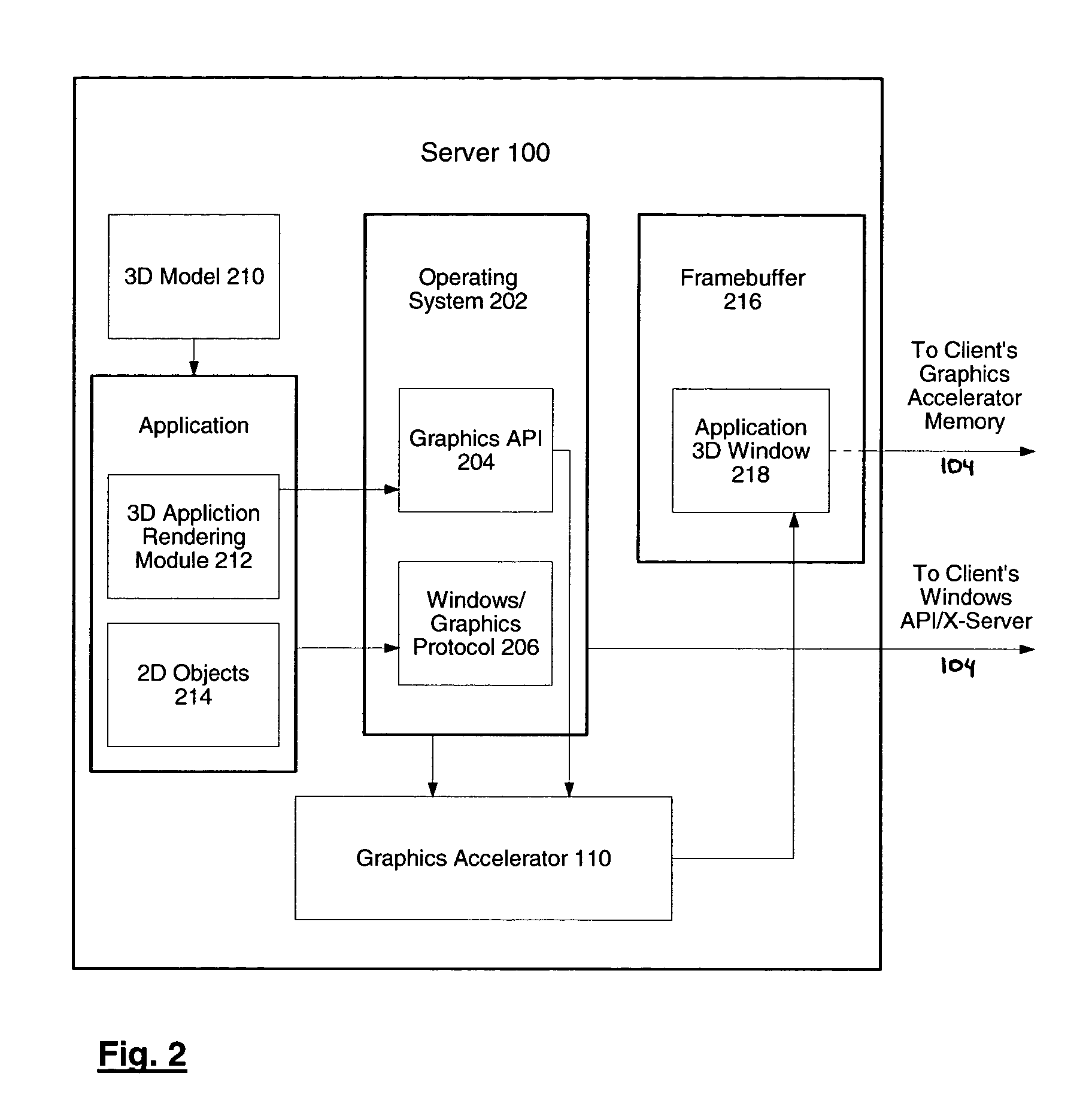System and method for network transmission of graphical data through a distributed application
a network transmission and distributed application technology, applied in the field of system and method for remotely displaying graphical data, can solve the problems of large graphical data size, unreliable network transmission bandwidth, and unique challenges of graphical data transmission, and achieve the effect of reducing the network bandwidth requirements (transmission size) of graphical information
- Summary
- Abstract
- Description
- Claims
- Application Information
AI Technical Summary
Benefits of technology
Problems solved by technology
Method used
Image
Examples
Embodiment Construction
[0027]FIG. 1 is a block diagram of a system for remotely displaying graphics in accordance with an embodiment of the invention. The system may include a 3-D graphics application server 100 and 3-D graphics client 102, which are referred to herein as the server 100 and client 102. In some applications, the server 100 and client 102 may be referred to collectively as nodes. The server 100 may be any computer that is configured to run a distributed application and remotely display graphical data and other information at the client 102. The server 100 may store a 3-D model to be rendered and imaged to remote clients. The server 100 may also manage resources that are used by one or more of the clients 102. These resources may include specialized rendered graphical data and other information generated by the distributed application.
[0028]The client 102 may be a computer that uses resources provided by the server 100. The client 102 may be configured to remotely display graphical data. In ...
PUM
 Login to View More
Login to View More Abstract
Description
Claims
Application Information
 Login to View More
Login to View More - R&D
- Intellectual Property
- Life Sciences
- Materials
- Tech Scout
- Unparalleled Data Quality
- Higher Quality Content
- 60% Fewer Hallucinations
Browse by: Latest US Patents, China's latest patents, Technical Efficacy Thesaurus, Application Domain, Technology Topic, Popular Technical Reports.
© 2025 PatSnap. All rights reserved.Legal|Privacy policy|Modern Slavery Act Transparency Statement|Sitemap|About US| Contact US: help@patsnap.com



